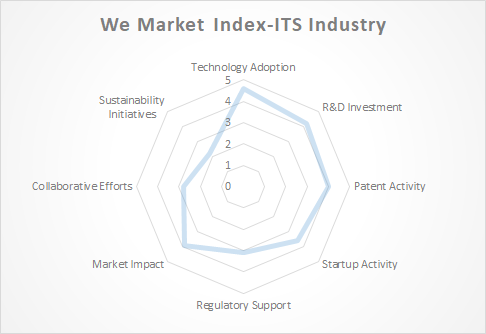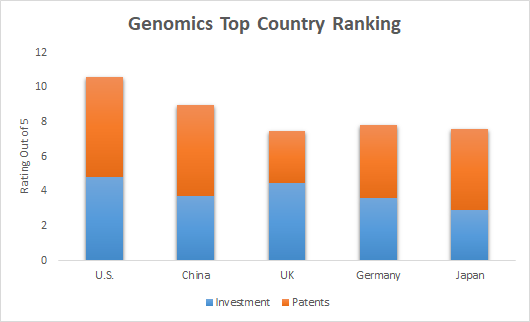Teleradiology: Revolutionizing Radiology for a Globalized World
In
today's rapidly advancing world, technology continues to transform every aspect
of our lives, and healthcare is no exception. Teleradiology, a subset of
telemedicine, has emerged as a pivotal force in revolutionizing diagnostic
imaging services worldwide. This burgeoning field allows radiological images
such as X-rays, CT scans, and MRIs to be transmitted and interpreted remotely
by radiologists, enabling faster diagnoses and improved patient care. As we
delve into the dynamics of the global teleradiology market, it becomes evident
that its impact is profound and far-reaching.
Understanding Teleradiology: Bridging
Gaps, Enhancing Care
Teleradiology
addresses the perennial challenge of accessibility to specialized medical
services, particularly in underserved or remote regions. By leveraging
high-speed internet and digital imaging technology, healthcare providers can
transmit MRI, CT scans, X-rays, and other diagnostic images to radiologists
located anywhere globally. This process not only accelerates diagnosis but also
allows for expert opinions and consultations, fostering collaborative
approaches to patient care.
Teleradiology Market Trends and Projections: An In-depth
Analysis
The
Teleradiology market is predicted to develop at a compound annual growth rate
(CAGR) of 25.5% from 2024 to 2034, when it is projected to reach USD 87.94
Billion by 2034, based on an average growth pattern. The market is estimated to
reach a value of USD 14.69 Billion in 2024.
The
global teleradiology market has witnessed robust growth in recent years, driven
by several key factors. Advancements in technology, particularly in high-speed
internet and digital imaging, have significantly enhanced the feasibility and
efficiency of transmitting medical images across vast distances. This has
facilitated round-the-clock access to radiological expertise, overcoming
geographical barriers and time zone differences.
Moreover,
the increasing burden on healthcare systems to deliver timely diagnoses has
spurred the adoption of teleradiology services. With radiologists in high
demand and uneven distribution of healthcare professionals globally,
teleradiology bridges the gap by offering remote interpretations from experts
worldwide. This not only accelerates diagnosis but also improves patient
outcomes by ensuring prompt medical intervention.
Teleradiology Benefits Patients: Faster Diagnosis, Improved
Care
· Faster
diagnoses and treatment: Traditional radiology can involve waiting for a
radiologist to be available to interpret your images. Teleradiology eliminates
this delay. Radiologists can review your scans remotely, often delivering
results within hours, even in evenings or weekends. This quicker turnaround
time allows your doctor to diagnose your condition faster and get you on the
path to treatment sooner.
· Improved
access to specialists: Not all medical facilities have radiologists on
staff, especially sub-specialists needed for interpreting complex scans.
Teleradiology connects you with a wider pool of highly-qualified radiologists,
ensuring you receive expert analysis regardless of your location.
· Enhanced
quality of care: Teleradiology fosters collaboration between
radiologists. If your case is complex, teleradiology allows for consultations
with sub-specialist radiologists, potentially leading to a more accurate
diagnosis and better treatment plan.
· Increased
patient satisfaction: Faster turnaround times, improved access to
specialists, and the potential for a more accurate diagnosis all contribute to
a more positive patient experience.
·
Reduced healthcare costs:
Teleradiology can help minimize costs associated with traditional radiology
methods. Facilities save money by not needing to staff radiologists around the
clock, and some patients may avoid the expense of travel to see a specialist.
Teleradiology Benefits Patients: Faster Diagnosis, Improved
Care
The role of a teleradiologist is
crucial in the field of telemedicine and healthcare delivery. Teleradiologists
are specialized radiologists who interpret medical images remotely, often from
a centralized location, to provide diagnostic insights and support to
healthcare providers and patients.
·
Remote Image Interpretation:
Teleradiologists analyze medical images such as X-rays, CT scans, MRI scans,
ultrasound images, and others. They interpret these images to identify
abnormalities, diagnose diseases, and assess injuries or conditions.
·
Timely Reporting:
Teleradiologists are responsible for providing timely and accurate reports of
their findings. They must adhere to strict timelines to ensure healthcare
providers receive diagnostic information promptly, facilitating timely patient
management and treatment decisions.
·
Consultation and Collaboration:
Teleradiologists often collaborate with onsite healthcare teams, providing
consultations and clarifications regarding imaging findings. They may
participate in multidisciplinary meetings to discuss complex cases and provide
expertise in radiological interpretation.
·
Quality Assurance:
Teleradiologists ensure the quality and accuracy of their interpretations
through rigorous quality assurance measures. This includes peer reviews,
ongoing education, adherence to imaging protocols, and compliance with
standards such as HIPAA (Health Insurance Portability and Accountability Act)
for patient data protection.
·
Specialized Expertise: Some
teleradiologists specialize in specific areas such as neuroradiology,
musculoskeletal radiology, pediatric radiology, or interventional radiology.
Their expertise allows them to provide detailed and nuanced interpretations in
their respective fields.
Conclusion: Shaping the Future of Healthcare
In conclusion, teleradiology stands
at the forefront of revolutionizing healthcare delivery, transcending
geographical barriers to ensure equitable access to quality diagnostic services
worldwide. As technology continues to evolve and healthcare systems adapt, the
global teleradiology market is set to expand, offering new possibilities for
collaboration, innovation, and ultimately, improving patient care outcomes
globally.
Embracing these advancements not
only augments diagnostic capabilities but also underscores a commitment to
leveraging technology for the betterment of human health. Together, we embark
on a journey towards a future where healthcare is not just accessible but truly
transformative.




